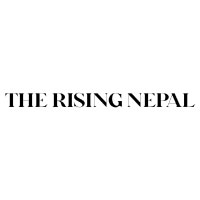- Friday, 19 December 2025
Obituary Pradip Nepal Man Of Word And Action
“Death, be not proud, though some have called thee;
Mighty and dreadful, for thou art not so”:
John Donne
Life is a transition between birth and death. Birth is an accident, while death is truth—perhaps the only and ultimate truth in the world. One’s birth is not known, but one knows well enough that once born is bound to die. What matters is only the time. Everything that exists on earth has an end. Birth and death are part of life.
In this cyclical journey of life, Pradip Nepal, former minister and CPN-UML leader, passed away on May 6, 2025, at the age of 71. He was born in Bhojpur in 1954. He physically departed from us, but he will always remain in our hearts forever.
My first acquaintance with him was in 1986. I was familiar with his literary name, Sanjaya Thapa, since the early 1980s. But I had not met him personally. It was a winter morning of 1986; I was sitting in the editorial room of Drishti Weekly in Kalimati.
Apart from me in the room were Raghuji Pant, the present honourable Minister for Education and then editor of Dristi Weekly; Gopal Guragain; and Shambhu Shrestha. All of us were working to bring out the next issue of Drishti Weekly.
A young man with eyeglasses and a hat entered the room. He shook hands with all four of us powerfully. He discussed national, international and literary issues. He often looked at me and asked me a few things about international issues. But I did not know him by face and also could not ask who he was. While leaving the room, he said to me, ‘I need your help.’ But I had no clue at all what help he exactly wanted from me. Once he was gone, I asked with other colleagues about him and came to know that he was Sanjaya Thapa.
It was the time of the Panchayat regime and absolute monarchy when political parties and their activities had been banned. Leaders of political parties were either in prison or operating clandestinely. If found, the leaders would have been put behind bars under sedition charges. Writing, speaking and doing anything against the Panchayat system, king and members of the royal family were considered treason. The Nepali Congress and other parties, including the Communist Party of Nepal (Marxist-Leninist) or CPN-ML, were operating covertly against the Panchayat regime. Thus, CPN-ML did not disclose its organisation and leadership. All leaders were known by different names other than their real ones. The CPN-ML later changed into CPN-UML after its unification with the Communist Party of Nepal (Marxist) led by Man Mohan Adhikari.
I used to write on international issues in the Drishti Weekly under the pen name Samyam Sharma. Sanjaya Thapa and I started meeting almost regularly or at least once a week. I used to live in Kalimati, and he visited my room several times. In our first meeting, he had said that he needed help from me. Later it was only known that he wanted me to translate some documents from English to Nepali, which I did.
During those days, the American Library was in New Road. This library was a place where I used to visit for reading American newspapers, magazines and other materials. Computers and the internet were not available during those days. Books and papers were the only source of information and knowledge. I often provided him information and other reading stuff borrowed from the American Library. This is how intimacy further grew with Comrade Sanjaya Thapa (Pradip Nepal).
It was only a long time later that I knew his real name, Pradip Nepal. After the restoration of the multi-party system in 1990, he came overground, and he was known more popularly by his real name, Pradip Nepal. I worked with him closely for many years as he was handling CPN-UML’s publicity and other departments.
The wheel of time continued to move fast; so did the politics of Nepal. In the 1994 parliamentary election, CPN-UML emerged as the largest party in parliament, and a CPN-UML minority government was formed, headed by Man Mohan Adhikari. Pradip Nepal was appointed as Minister for Information and Communication. I had already joined The Rising Nepal and was assistant editor.
Soon after he was appointed minister, he called me at his residence in Dallu, and we discussed the ministry and, more particularly, the Gorkhapatra Corporation. The next day, he moved to official quarters in Pulchok.
Despite being a minister, our relation was as usual as friends. I did everything that he asked me, and in a similar way, he also took seriously everything I said. Our relations remained warm, cooperative and friendly throughout until his demise.
His political and literary life moved ahead in parallel. One did not disturb the other. As a writer, he has several books to his credit, including, among others, Khuite Kadariya, Party Ki Aama, Purbatira, Mukti, Bunglaka Samjhanaharu, Deumaimko Kinarama, Naoilaune Phool, Katha Bhitraka Nari Anuharharu and several others.
He also wrote columns and articles in different newspapers and magazines. Pradip Nepal was a versatile personality. He was a politician, activist, singer, writer and a good organiser.
Pradip Nepal was an honest and straightforward, hard-working and action-orientated person.
He was a man of words and action. He did what he said and believed with honesty and dedication. In the turbulent world of politics, Pradip Nepal cultivated and maintained a consistent image. Unlike other politicians, he was not a hypocrite—saying one thing and doing exactly the opposite.
He did what he said, and he said what he could do. Like in John Donne’s sonnet ‘Death’, Padip Nepal has not died, but he is very much with us, though not physically, but with his works and contributions.
(The author is former ambassador and former chief editor of this daily. lamsalyubanath@gmail.com)















